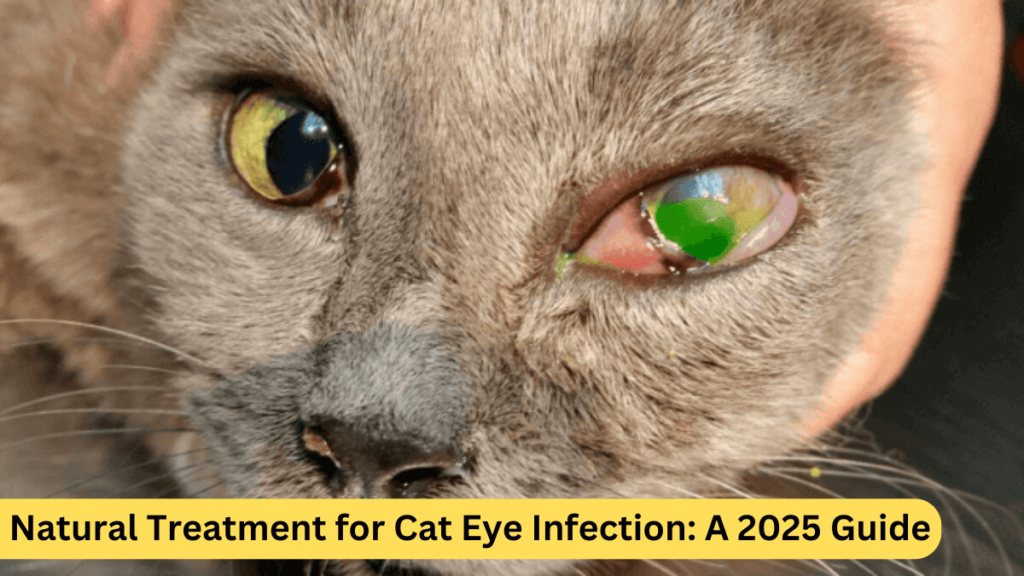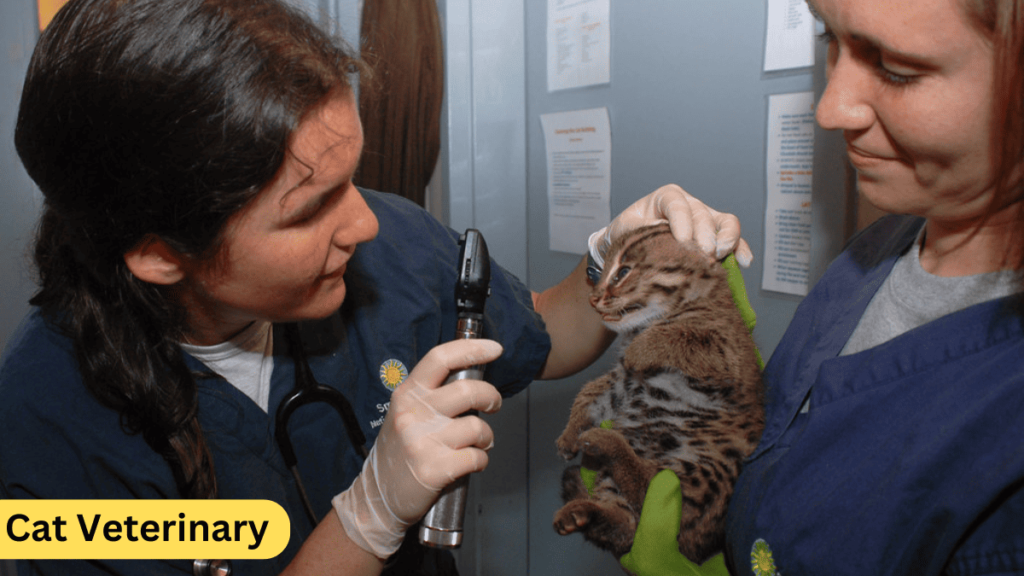
Cats are known for their beautiful, expressive eyes, but just like humans, they can experience eye infections that cause them discomfort. When your feline friend shows signs of watery or irritated eyes, you might start looking for a solution—ideally, a natural one. This guide will cover Natural Treatment for Cat Eye Infection: A 2025 Guide, providing safe, holistic remedies that can ease symptoms and even help prevent future infections. Before starting any treatment, consult your veterinarian to rule out severe conditions that require medical intervention.
Table of Contents
Recognizing Cat Eye Infections
To provide the best natural care for your cat, it’s important to recognize the signs of an eye infection. The following symptoms may indicate that your cat’s eyes are affected:
- Excessive tearing or watery eyes
- Yellow or green discharge from the eye
- Redness or swelling around the eye
- Squinting or blinking excessively
- Rubbing or pawing at the face
- Protruding third eyelid
If you observe one or more of these signs, your cat may have an eye infection. While natural remedies can help, severe or worsening symptoms warrant a prompt visit to the veterinarian.
Common Causes of Eye Infections in Cats

Eye infections in cats can have various causes, broadly categorized as infectious and non-infectious:
Infectious Causes:
- Bacterial infections
- Viral infections such as feline herpesvirus and calicivirus
- Upper respiratory infections (common in cats, especially those in shelters or multi-cat households)
Non-Infectious Causes:
- Allergies (environmental or food-related)
- Trauma or injury to the eye
- Foreign bodies like dust or grass
- Autoimmune conditions
Understanding the underlying cause can help guide the right course of natural treatment, focusing on symptom relief and prevention of further irritation.
Best Natural Treatments for Cat Eye Infections
Here are several effective, natural remedies you can try at home to help ease your cat’s eye discomfort. These methods are safe and gentle when applied correctly and may complement veterinary treatments if needed.
| Natural Remedy | Benefits | How to Use |
|---|---|---|
| Chamomile Tea | Reduces swelling and soothes the eye area | Brew a chamomile tea bag, let it cool, then apply it as a compress for 5–10 minutes once or twice daily. |
| Saline Solution | Flushes out debris and reduces irritation | Mix 1 cup of distilled water with 1/4 teaspoon salt. Apply a few drops to the affected eye with a clean dropper. |
| Apple Cider Vinegar (Diluted) | Helps with antibacterial support and boosts immune system | Mix equal parts apple cider vinegar and water. Dab a few drops on the back of your cat’s neck (never in the eye) to aid immune support. |
| Coconut Oil | Natural moisturizer with antibacterial properties | Dab a tiny amount near the eye, avoiding direct contact with the eye. Use once daily. |
| L-Lysine Supplement | Helps reduce symptoms of viral infections (e.g., herpesvirus) | Add L-Lysine powder to your cat’s food according to the dosage recommended by a vet. |
1. Chamomile Tea Compress
Chamomile tea has natural anti-inflammatory properties that can reduce swelling and redness. To use it, brew a chamomile tea bag and let it cool completely. Soak a cotton ball or soft cloth in the tea, and gently press it on your cat’s closed eye for a few minutes. Repeat this once or twice a day.
2. Saline Solution Rinse
Saline solution is a simple yet effective way to clean your cat’s eyes and relieve mild irritation. Use distilled or boiled (then cooled) water with a pinch of salt to create a gentle rinse. Apply a few drops using a clean dropper, allowing it to flush the eye area gently.
3. Apple Cider Vinegar
Apple cider vinegar contains natural antiseptic properties and can help with bacterial infections when used correctly. Mix equal parts of raw, unfiltered apple cider vinegar with water. Dab a small amount onto the back of your cat’s neck, avoiding direct eye contact. This approach boosts the immune system and can prevent infection spread.
4. Coconut Oil Application
Coconut oil has moisturizing and antibacterial benefits. Apply a very small amount on a cotton swab, avoiding direct eye contact. Coconut oil can help soothe the skin around the eye, reducing redness and itchiness.
5. L-Lysine Supplement
For cats with recurring viral eye infections, such as those caused by feline herpesvirus, L-Lysine can help manage symptoms. This amino acid supplement can be added to your cat’s food to help reduce flare-ups and shorten recovery time. Always consult your vet for the proper dosage.
Read More:
Blood in Cat Urine Treatment: 2025 Guide
Supporting Your Cat’s Health Naturally
Besides topical treatments, making a few environmental and dietary adjustments can support your cat’s overall eye health.
- Maintain Clean Air: Dust and pollen can irritate your cat’s eyes, especially if they have allergies. Using an air purifier helps reduce airborne allergens.
- Upgrade Their Diet: A balanced, high-quality diet strengthens your cat’s immune system. Additions like omega-3 fatty acids from fish oil can reduce inflammation.
- Regular Grooming: Keeping your cat clean, especially around the face and eyes, can prevent dirt and dander from causing irritation.
When to See the Vet

Natural treatments can relieve minor eye issues, but some cases require professional attention. If symptoms persist or worsen despite home treatment, consult a vet immediately. Indicators for a veterinary visit include:
- Persistent or severe swelling
- Thick, yellow or green discharge
- Painful reactions to touch near the eye
- Prolonged squinting or inability to open the eye
FAQ: Natural Eye Infection Treatment for Cats
Here are some commonly asked questions regarding natural treatment for cat eye infections:
Can I Use Human Eye Drops on My Cat?
No, human eye drops are generally not safe for cats. Ingredients in over-the-counter eye drops may cause further irritation or severe reactions in cats. Stick to natural treatments and consult your vet before using any new product.
How Can I Prevent Eye Infections in My Cat?
Prevention includes regular eye cleanings with saline solution, keeping your home free of dust, and ensuring your cat’s diet supports a healthy immune system. Monitoring their interactions with other animals and avoiding stress can also help, especially for cats prone to viral infections.
Is Coconut Oil Safe for Cat Eye Infections?
Yes, coconut oil is safe when used carefully around the eye. Apply a minimal amount near the eye without allowing it to contact the eye directly. Coconut oil is soothing and has natural antibacterial properties, making it a gentle choice for reducing skin irritation.
Final Thoughts
Eye infections can be uncomfortable for cats, but natural remedies offer a safe, effective option to soothe symptoms and prevent further irritation. By following these methods and maintaining a clean, low-stress environment, you’re taking proactive steps to support your cat’s eye health. Remember, natural treatments work best when paired with professional advice, so always reach out to your veterinarian if symptoms persist or worsen.
